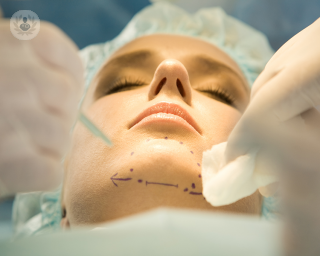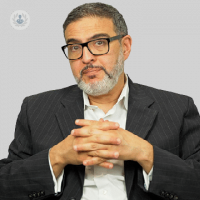Chin surgery (mentoplasty)
What is chin surgery (mentoplasty)?
Chin surgery, also known as mentoplasty, genioplasty or chin augmentation, is a surgical intervention that aims to modify the size of the chin to achieve a more proportionate and aesthetically pleasing face, correcting congenital facial asymmetries or those caused by an accident. Chin surgery can be done either by inserting an implant or by modifying the bones.

Why is chin surgery done?
Chin surgery is performed for both cosmetic and reconstructive purposes. For some people, the appearance of their chin is not ideal and having chin surgery can give them a more desired appearance. For others, malformation or injury can cause the chin to appear misplaced or unbalanced with the rest of the face. Chin surgery can address both of these concerns.
What does chin surgery consist of?
Depending on the objective of the intervention, the most appropriate technique for each patient is applied. If a chin is being augmented and enhanced, there are a number of options. For non-permanent results, injectable fillers can be used to achieve enhancement results without the need for surgery.
However, to achieve a permanent change, surgical implants can be used. This procedure can take around 45 minutes and involves an incision being made inside the mouth. Through this, a pocket is made to insert the implant which is positioned accordingly. Implants can vary in size and shape, according to the patient’s wishes. General anaesthesia is mostly used for this procedure, but it can be performed as a day-case.
If a chin reduction is being performed, an incision is made inside the mouth or under the chin. Through this incision, excess tissue and fat are removed to create the desired shape. General or local anaesthesia can be used for this procedure.
Preparation for chin surgery
Prior to the procedure, the patient must have X-rays of the face and chin. This is so the surgeon can use them to determine which part of the chin needs to be augmented. Depending on the type of surgery, fasting may be required.
What is recovery time like?
After surgery, the patient will feel some discomfort and pain that can be alleviated by taking painkillers as indicated by the doctor. As the jaw is likely to be sore initially, a diet of soft foods will be necessary for the first few days. You can also expect to feel some tightness around your mouth and chin for the first week.
Most people will find it necessary to rest for between one to two weeks after surgery. Scarring will be minimal, particularly if the incision is made inside the mouth. Full results can be seen a few months after surgery.












